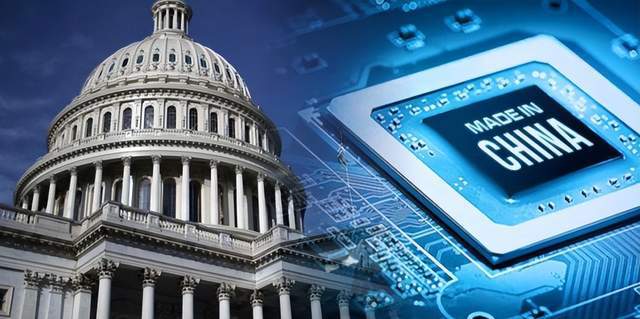Recently, Chinese officials have announced a number of groups of heavy data in 2023, including economy, population and so on, one group of customs data shows that in 2023, China imported a total of 479.5 billion chips, down 10.8% from 2022. Imports fell 15.4 percent to $349.4 billion. The proportion of decline in 2023 should be the most severe decline in more than 10 years.
The reason for the sharp decline in the number of Chinese imports of chips need not be said, in addition to the trough of the chip market cycle, the global chip industry recession, resulting in a reduction in Chinese market demand, the most essential reason is the United States chip ban on China, affecting the number of Chinese imports of chips in the past year. On the surface, the data looks like China's chip market has shrunk, but a detailed analysis shows that China's chip market has not only not shrunk, but its independent innovation capacity and production capacity have grown. In 2023, China's total output of integrated circuits is 311.38 billion, an increase of 3.7%.
Instead of hurting China, the US sanctions have put its own companies in a hole. Since the United States began to increase its pressure on Chinese chips in 2022, a series of semiconductor companies including Intel, AMD, Nvidia, ON, Lattice, Pan Forest, Ying material, Texas Instruments, NXP have been affected by the ban, and their stock prices have plunged, far outperforming the US stock market, and semiconductor giant Intel even has layoffs to cope with the dilemma of declining sales. Entering 2024, as the United States takes more restrictive measures, it is inevitable that more US semiconductor companies will lose more.
China, on the other hand, has not been affected by sanctions, but has bucked the trend. The year 2023 is a landmark year for China's semiconductor chip technology, as the country has made important breakthroughs on its way to becoming a powerhouse of independent innovation. Here comes the Huawei Mate 60, which is less impressive on its own than the underlying technology that has catapulted the Shenzhen-based handset maker back to the main stage in the world's largest and most competitive market.
Another marvel is the 5G-class speed of the Mate 60's cellular network, which is made possible by the modem portion of the company's Kirin 9000 system chip. In addition to SOCs for computing, China has also made breakthroughs in memory chips used to store data in smartphones, laptops and data centers. Not only that, China has also developed the world's first super all-analog optoelectronic chip, made breakthroughs in memristor memory computing chips, and developed the first reconfigurable 5G RF transceiver chip. All in all, China's chip industry has taken a big step forward in 2023 and will be more independent of Western technology in the future.
The above facts are enough to prove that the US sanctions have completely failed, not only did not restrain China, but also pulled down its own enterprises. The battle for the chip market is a protracted war, and it is not possible to achieve a dramatic reversal overnight. China now needs continuous efforts to continuously improve the chip self-sufficiency rate, reduce imports, and eventually quantitative change will cause qualitative change. Of course, when China is completely free from the oppression of the United States and the West, it is the doom of American enterprises.




























